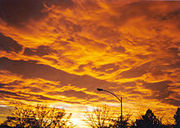MICROTECHNIQUES
MICROSCOPE
Microtechniques
Caring of microscope
illumination should be correctly centered.
condenser should be in a fix position.
everyone should use own microscope.
objective is the most sensitive part of the microscope, so should be cared well.
first select objective at low powe e.g 10X then to higher power e.g 20X,40X .
clean the objective with xylene.petroleum spirit or polystyrene, but the combinition of
polystyrene and xylene should be avoided because it form a thick layer on the surface of objective lense.
use oil only one of the oil immersion lense and clean after use.
cover the microscope and place it into acupboard when not in use.
polystyrene and xylene should be avoided because it form a thick layer on the surface of objective lense.
use oil only one of the oil immersion lense and clean after use.
cover the microscope and place it into acupboard when not in use.
Insert Sub Header Here
Microscope
micoscope is an instrument which is used to study the minute objects in detail.component of microscope
1 Light source
2 condenser
3 objective
4 object stage
5 nose piece
6 Body tube
7 Eye piece

Insert Another Sub Header Here
SUN is the major source of light while other are artificial source e.g electric lump, oil lump.The
dispersal of heat,collection og greatest amount of light,and direction & distence are all carefully
calculated by the designer for the greatest efficiency.
illuminations
(i) critical illuminatiors(ii)kohler illuminators
(i) critical illuminators
Best observations are made when light source is focused in the same plane asthat of object.When these conditions are suit then modren filament lamp is used as source
but in this case uneven, irregular illuminations are obtained. Which are not suitable for pho-
tographic purposes.
(ii) kohler illuminatiors
It uses an adjustable collector lense infront of the lump and the light source is
focused in the plane of iris diaphram of the condenser. So regular, even and homogeneous
illuminations are resulted.So kohler illuminations are suitalble for phtographic purposes.
2.condenser
Light from the light source entered in the first optical component , condenser.
The main function of condenser is to focus the available light into the plane of object. Because
better the light better will be the resolution power.
condenser has the ability of vertical adjustment for varying the thickness and
heights of slides Once the correct position of the condenser has been established,there is
no reson to move it.Condenser contain screw for centering the light, It also contain diaphram.
2/3 of the diaphram should kept close and 1/3 should be kept open.so there must be
compromise between light and resolution power.
3.Objective
It is most sensitive part of microscope. Type and quality of objective has great
influence on function of microscope.
Within the objective there may be lenses and elements from five to fifteen in
number depending on image ratio,type and quality.
functions
The main tasks of objective is to collect maximum amount of light from object
and to form a magnify real image. For most biological applications using trasmitted light
objectives are computed for a optical tube length of 160mm or 170mm.
Magnification power or objective to image ratio of objective are from
1:1 to 100:1 in normal biological instruments.
Types of objectives
(i) Achromatic
(ii)Apochromatic
(i) Achromatic
achromatic objectives are mainly used and are less expensive. They arecorrect for red and blue colour. Wavelength between red and blue colour are acceptable
to human eye and these forming a complete visible lmage e.g fluride objectives.
(ii) Apochromatic
apochromatic objectives are very expensive. They contain glass minerals
and other elements.Chromatic and spherical abrretions are eleminated e.g plane objectives
.They are suitable for phtographic purposes because the form flat image.
Numerical apperture
The ability of an objectiveto resolve detail is indicating by its numerical apperture.
It can be calculated as follows:
NA=n x sinu
Where n is the refrective index of the medium between the cover glass over the object
and front lense of objective. u is the angle included between the optical axis of the lense
and the outer most ray which can enter the front lense.
n of air is one,of dry objective is 0.95 and for oil immersion objective is
theoratically is 1.3 to 1.5 while practically 1.2 to 1.4.
4.Object stage
Object stage is a rigid plateform with a apperture, through apperture light rays
can pass. Object stage can move horizently as well as vertically. It contain a slide clip
and vernier scale.
5.Nose piece
Objectiveb are screwed in a nose piece. It can accomodates 4-6 objectives.
In modren microscopes nose piece is interchangable.
6.Body tube
It is present above nose piece. It exist in three forms i.e monocular, binocular
and combined photo-binocular. The latter consists of a prism system that allows 100%
light to go to eyepiece, or to the camera. For photographic purposes , prism split 80%
light to the camera and 20% to eyepiece.
Provision is made in binocular tubes for the adjustment of the inter-pupillary distence.
7.Eye piece
Lense near the eye is known as eyepiece. Eyepiece is the final optical part of
microscope.They magnify the image form by objective within body tube and present the eye
with a virtual image. 1st thwy were subjected to aberrations, but now eye piece contain
reticues for measurment for photographic purposes. They have high focal prints for spherical waves.
WWW.TAUQEERALIBUTT.20M.COM
Insert Another Sub Header Here
FIXATION
Fixationis a complex series of chemical agents that differ for different
group of substances found in tissue, but this definition is not complete.....
Fixation can aloso be define d as "the foundation of all stages that take
part in the preparation of sections till diagnosis."
AIMS OF FIXATIVES
To prevent autolysis and bacterial decomposition.
To save tissue from change in shape, size and volume.
Tissue should remain near to liiving stage as much as possible.
Small molecules should not be lost.
To prevent antigenic site.
To preserve enzymes otherwise their deficiency lead to disease.
we can get well optical differentiation of cell components.
celullar component should be insoluble in fixative fluid.
Fixative should be cheap and stable.
It should penetrate into tissue inorder to get complete fixation.
It should be non-toxic and non-alergic.
It should not cause hardness or shirinkage of tissue.
It can act as a modent.
Osmolality of fixative should be same as that of body fluids.
CLASSIFICATION OF FIXATIVES
In 1960 Baker classified fixatives as COAGULANT and
NON-COAGULANT.
Second classification was made when complete chemical and
physical charecteristics of fluids was known.
(1) ALDEHYDES
formaldehyde, glutaraldehyde, glyoxal, acrolein.
(2) OXIDIZING AGENTS
osmium tetraoxide, potasium permegnate, potassium dichromate
(3) CROSS LINKING AGENTS
carbodiimides
(4) DENATURING AGENTS
acetic acid, methyl alcohol,ethyl alcohol
(5) UNKNOWN MECHANISM
mercuric chloride,picric acid, non aldehyde containing fixatives, dye stuffs
(6) MIXTURE OF FIXATIVES
(i) aldehyde and oxidising agents
(ii) acrolein and glutareldehyde
(iii) paraformaldehyde and glutareldehyde
FACTORS AFFECTING FIXATION
There are some factors which affect fixation. These are listed bellow:
PH
It differ for different fixatives but on average normal ph range is 6-8.
Out of this range ultra structure can demage.But some tissues require special
ph e.g gestric mucosa 5.5. Acetic acid is used as fixative to lower the ph but
it denature protein and cause precipitation.It order to maintain ph buffer should
be use, but buffer should not react with fixative nor inhibit the enzymatic activity.
TEMPERATURE
Certain fixatives are used at room temperature but for electron
microscopy temperature range is 0-4, with exception of mast cells which
should be fixed at room temperature even for electron microscopy.Heat
is require to fix blood film and bacteriology.For rapid fixation formalin is
heated at 60'C but the risk of tissue distortion increase.
PENETRATION OF FIXATIVES
Penetration is an important factor especially for large tissues.
The tissue block should be small in size to allow greater penetration of
fixative. Penetration can related to time as "the depth penetration (d) is
directly propotional to the square root of time (t).which can be written as
d t d=k t
The constant k is the cofficient of diffusibility of fixative.
CHANGE IN VOLUME
The mechanism is still un known.There can be a change in
membrane permeability, inhibition of respiration or change in movement
of ion through membrane. Change in volume does not occur only during
fixation but also during dehydration and embedding.
OSMOLALITY
Hypertonic solution cause shirinkage of cells while hypotonic
or isotonic solution cause swelling of cell, for E/M hypertonic solution are
preferable because hypotonic solution will lead to bubbling artefacts.It
also cause diffusion of acid phosphatase from lysosomes.
CONCENTRATION OF FIXATIVES
This is basically depend upon cost , availibility and effectiveness of fixative.
DETERGENTS
non ionic detergents are used for immunoflurescence technique
.They allow large molecules of lactin to pass through membrane witout demaging
the membrane.
SUBSTANCE ACT AS VEHICLE
Fixatives consists of fixative agent, buffer and water, other
substance can also be added to enhance its function e.g Nacl cause binding
of mercuric chloride to amino grop of protein.
DURATION OF FIXATIVE
It is also variable in formaldehyde fixation the time period is very
short, if it get prolonged it will lead ti shirinkage of tissue. In glutareldehyde
fixation time period is very long but very prolong time period will lead to
inhibition of enzymes.
WWW.TAUQEERALIBUTT.20M.COM
